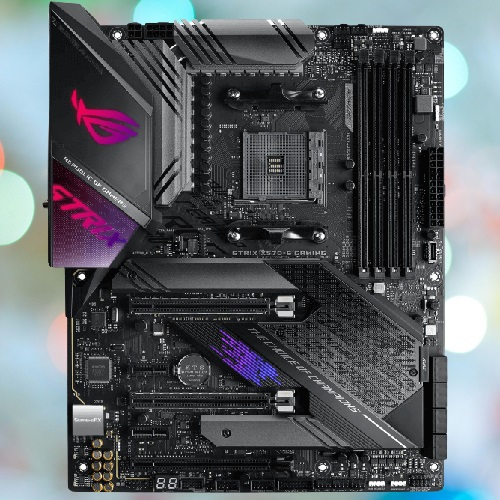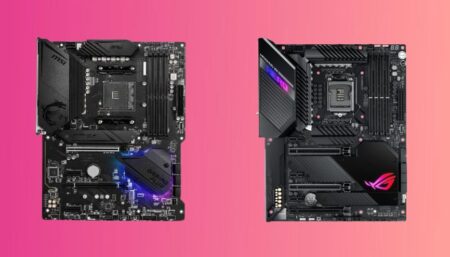![What is an Extended ATX Motherboard? [2024]](https://www.ingameloop.com/wp-content/uploads/What-is-Extended-ATX-Motherboard.jpg)
The motherboard is an integral component of a computer system, functioning as its structural foundation and facilitating the connection and coordination of various components, such as the processor, graphics card, memory modules, storage devices, and more. Its role is vital in ensuring optimal system performance. To cater to diverse needs, motherboards are available in various form factors, each with unique dimensions and layouts. Prior to building a custom personal computer, it is essential to understand the different form factors and determine which best suits your requirements.
Among the multitude of form factors are ATX, micro ATX, Mini-ITX, and extended ATX, each with its corresponding case types, power supply configurations, expansion slots, and other features. In this article, we will delve into the extended ATX motherboard, examining its distinctions from other motherboard form factors in terms of size. Furthermore, we will explore its advantages, limitations, suitability for tech enthusiasts, and other relevant aspects. Continue reading to gain valuable insights into the world of extended ATX motherboards.
Key Takeaways
- Extended ATX (E-ATX) is a motherboard form factor that is larger than the standard ATX, allowing for more expansion slots and components.
- E-ATX motherboards are typically used for high-end gaming, workstation, or server builds that require more power, cooling, and performance.
- E-ATX motherboards have the same mounting holes as ATX, but they are wider and may not fit in some ATX cases. They also need a compatible power supply with enough wattage and connectors.
- E-ATX motherboards offer more features and flexibility than ATX, such as more PCIe slots, memory slots, M.2 slots, SATA ports, RGB headers, fan headers, and overclocking options.
- E-ATX motherboards are more expensive and complex than ATX, and they may not be necessary for most users who do not need the extra capabilities. They also generate more heat and noise, and may have compatibility issues with some components or software.
What is an extended ATX motherboard?
To understand the extended ATX or EATX motherboard effectively, we have to know about the ATX motherboards? As I mentioned earlier, each motherboard has a specific size or form factor. The ATX or Advanced Technology Extended is the most common motherboard size in the market with 9.6 inches × 12 inches dimensions. It was introduced in 1995, but many improvements have been made to improve it. In short, it’s a standard motherboard, and all other board types are slightly tweaked variants of this type.

The real question of what is an EATX motherboard is still there. Well, it’s an extended or bigger version of the standard ATX board with 12 inches × 13 inches (305 mm × 330 mm) dimensions. Due to such a massive size, it has some benefits and a few drawbacks over other form factors. The main differences between the both are related to the size, functionalities, and cost, obviously. I would like to discuss all the differences in detail and answer the question of whether we choose it or not. So, let’s get started.
What are the differences?
Bigger size or form factor
The main and most obvious factor that makes various types of motherboards different is their size. That’s why we can see an extra word “extended” in the name of the EATX motherboard, meaning bigger and more impactful. So, it has dimensions like 12 inches x 13 inches rather than the 12 inches x 9.6 inches in the normal ATX motherboard—the EATX boards are two to three inches extra in size.
These bigger boards are mostly made for servers or bigger computers where there is some extra space to accommodate these circuits. In contrast, in recent years, manufacturers have started offering these for systems that are used for high-end gaming or serious content creation. So, if you don’t run the servers businesses but want ultra-edge gaming performance, you can choose these boards.
REASONS TO BUY
✓More RAM accommodations
✓Better connectivity
✓Better heat dissipation
REASONS TO AVOID
✗Only for bigger PCs
More functionalities and useability
The EATX boards are bigger in size than all the other types of boards, so they have more specifications, features, and many additional ports. For comparison, the ATX usually comes with 3-4 PCIe x16 ports and 4 RAM slots while having support to accommodate one graphics card. In contrast, the EATX usually has 4-6 PCIe x16 slots, 4-8 RAM sockets, and even can accommodate dual graphics cards.
As I mentioned earlier, the extended motherboards are made for high-end utility in gaming and content creation. All the specifications mentioned earlier are enough to prove the statement. So, suppose you want graphics performance during intensive graphics-related workloads or want to accommodate more volatile memory than what ATX boards offer. In that case, these EATX motherboards are for you.
Price
Most of the time, the extended ATX motherboards are pricier than the ATX motherboards, not because of their larger size but because of more performance, higher features, and impressive specifications. In addition, you can find many of the EATX boards available at a lesser price than the normal ATX board. So the thing to remember is that an EATX board usually comes with more price than an ATX one only if you ensure the same features level.
Comparison between ATX and EATX boards
| ATX motherboard | EATX motherboard | |
| Full form | Advanced Technology eXtended | Extended Advanced Technology eXtended |
| Definition | ATX is the standard motherboard’s form factor. | A slightly larger motherboard than ATX is EATX. |
| Type | De Facto standard for the motherboards. | Larger than an ordinary ATX board. |
| Overclocking | Lesser than EATX. | Higher than ATX due to bigger size and better cooling. |
| Thermal management | Lesser than EATX. | Better than ATX due to its bigger size and more area. |
| Price | It Costs less than EATX. | Pricey than the ATX board. |
| Used for | Used in a normal computer that is used for average uses. | Used in servers and for the systems to get high-end gaming and content creation performance. |
Conclusion
Many of the users were asking about what is an extended ATX motherboard and why we should buy this instead of others. It all depends upon your usage and requirements whether an EATX is better than others or not. If you’re a hardcore gamer, do some serious content creation, or want to build a top-tier PC for extensive usage, there is no better option than EATX in terms of performance. In contrast, if you have ordinary usage, an ATX board will work fine for you since it offers pretty much everything for mid-tier performance.
The extended ATX motherboard is two to three inches larger on one side than the ordinary ATX boards. There are some drawbacks to having this larger board, but the number of benefits is higher. Due to a larger surface area, the heat dissipation rate is fast, so it can maintain the cooling more effectively than a smaller size ATX board. But it causes more size-wise compatibility issues than normal ATX boards. Additionally, not all PC cases can accommodate such a bigger motherboard, so keep everything in check.
Frequently Asked Questions
EATX vs ATX: which is better?
Both types of motherboards are great but which is better depends upon your usage. If you are a gamer or content creator, ATX is perfect for you. Instead, if you want to utilize extensive connectivity with an extreme amount of RAM and peripherals, EATX is for you.
Is EATX better than ATX?
No doubt, the EATX has some advantages over the ATX but has some downsides as well. In terms of connectivity options and RAM expansion, the EATX board wins the title. In contrast, if you don’t want such connectivity, the ATX will suit you better.
How to choose a motherboard?
Choosing a motherboard may be a time-taking process but not complicated. First of all, you have to start by selecting a suitable size as per your usage. After that, ensure what CPU you would like along with the amount of RAM, PCIe slots, and other factors.




![How to Test Motherboard without CPU? 4 Methods [2024]](https://www.ingameloop.com/wp-content/uploads/How-to-Test-Motherboard-without-CPU-450x257.jpg)
![Can Motherboard Affect FPS? Each Factor is Explained [2024]](https://www.ingameloop.com/wp-content/uploads/Can-Motherboard-Affect-FPS-450x257.jpg)

![Which Motherboard supports DDR5 RAM? [2024]](https://www.ingameloop.com/wp-content/uploads/Which-Motherboard-supports-DDR5-RAM-450x257.jpg)